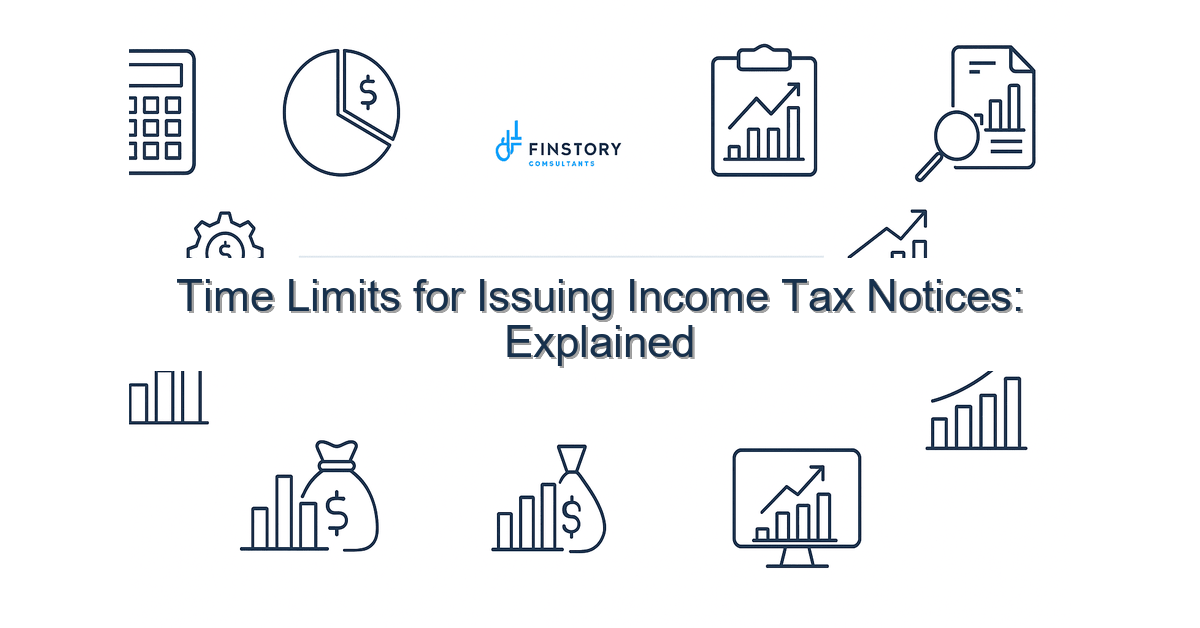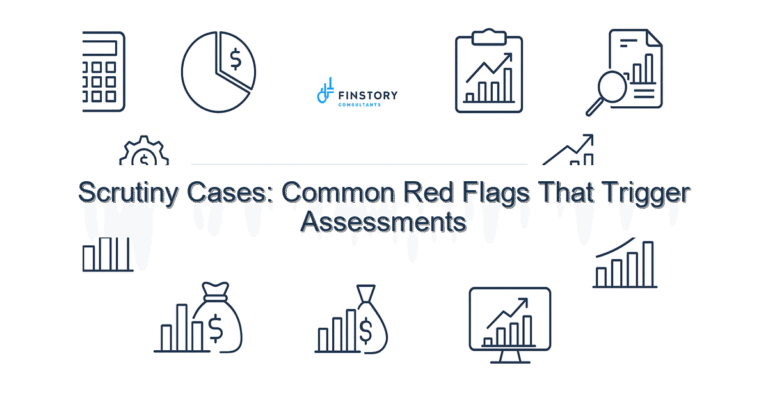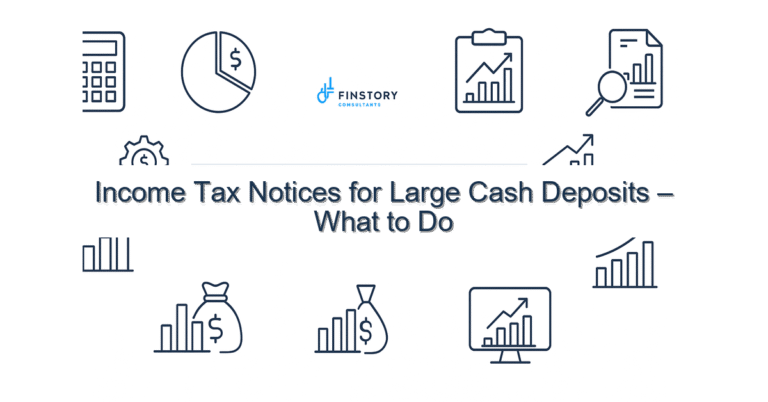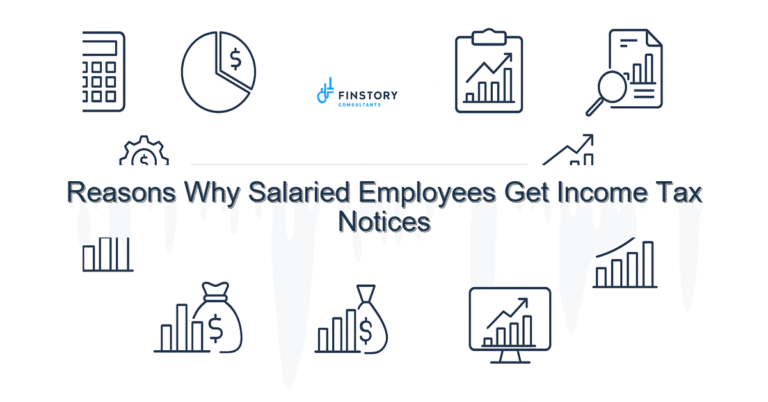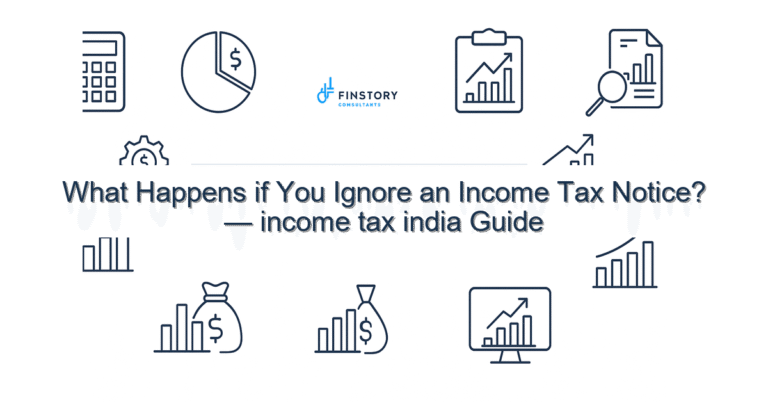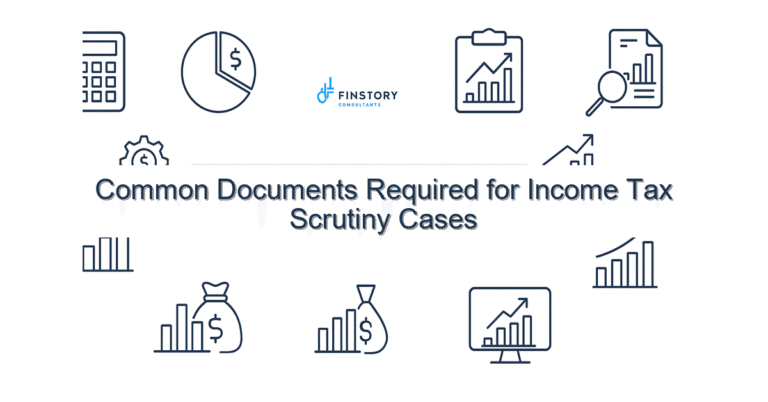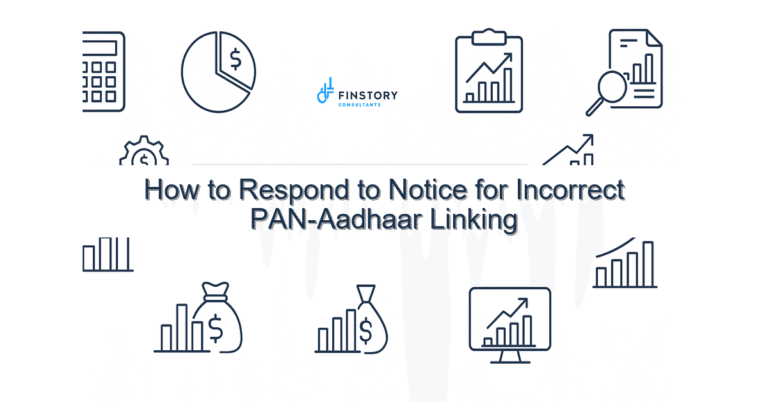Time Limits for Issuing Income Tax Notices: Explained
Getting a notice from the tax department is stressful—especially when you don’t know why it arrived or how long ago the issue arose. Many salaried employees, founders and MSME owners tell us they feel blindsided by notices that reference years-old transactions.
Summary: The most important takeaway: most reopenings are time-bound—usually within three years from the end of the relevant assessment year, but in serious concealment cases notices can be issued up to ten years. Know which notices have strict timelines, check your AIS/26AS and records early, and get help fast to limit risk and cost.
What’s the real problem in India?
Tax law in India uses a mix of assessment-year/previous-year (AY/PY) dating, statutory sections and department guidance from the CBDT. That makes it confusing for taxpayers to know which deadlines protect them and which don’t. Notices can reference notices under sections like 142, 143, 148, 153A or 153C—and each has its own practical and legal implications.
- Symptom: You find a notice referencing income from 3–7 years ago and panic about penalties.
- Symptom: Your AIS/26AS shows a TDS mismatch but you missed reconciling it before the ITR filing last date.
- Symptom: You relied on a tax advisor but don’t have documentation for capital gains indexation or deductions like Section 80C limit claims.
- Symptom: A tech founder or MSME receives a scrutiny notice and isn’t sure which books or invoices the department will ask for.
What people get wrong
Many taxpayers assume that once a return is filed, the matter is closed. That’s not true. Here are common pitfalls:
- Thinking every notice must be issued within one year—some notices can be issued years later under valid legal grounds.
- Ignoring AIS/26AS or TDS/TCS mismatches—unreconciled TDS entries are a top trigger for notices.
- Assuming small errors won’t attract reassessment—intent and concealment thresholds matter.
- Not maintaining proof for deductions (Section 80C limit claims) or capital gains calculations (indexation), making replies weak.
A better approach
Instead of reacting, build a repeatable system to reduce notice risk and respond faster when one arrives. Here’s a simple framework:
- Reconcile AIS/26AS and bank statements quarterly — fix TDS/TCS mismatches before the ITR filing last date.
- Maintain evidence folders for key claims (Section 80C limit receipts, capital gains indexation worksheets, Form 16/16A, invoices).
- When you get a notice, pause and map: identify the notice type (e.g., 142(1), 148/147 reopening, 153A/153C post-search) and the relevant AY.
- Assess time limits: check if the notice is within statutory reopening windows (3 years, or up to 10 years for high-value concealment). If unclear, consult a tax expert immediately.
- Prepare a focused factual response with evidence, and use professional representation if the matter escalates to scrutiny or reassessment.
Real-world example: A Delhi-based freelancer received a Section 148 notice for AY 2017–18 six years later. Because she had reconciled her AIS/26AS and retained invoicing and bank evidence, her tax consultant proved there was no concealment and avoided reassessment—saving an estimated Rs. 4 lakh in potential tax, interest and penalties.
Quick implementation checklist
- Download and review your AIS/26AS now; flag any unmatched TDS/TCS entries.
- Compare Form 16/Form 16A and employer/bank TDS entries before the ITR filing last date.
- Save digital copies of key proofs: mutual fund statements, property sale docs for capital gains indexation, life insurance and PPF receipts for Section 80C limit claims.
- Set a calendar reminder to reconcile TDS quarterly.
- If you operate an MSME or are a founder, document revenue recognition and major receipts with contracts and invoices.
- If a notice arrives, do not ignore—note the section cited and the response due date; do not dispose of any records mentioned.
- Prepare a short timeline of events and transactions for the AY in question to share with your tax advisor.
- Consider professional representation for replies to notices to avoid technical mistakes in submissions.
What success looks like
When you follow these steps, measurable outcomes include:
- Faster resolution of notices — response times drop from weeks to days.
- Fewer reopenings—proper reconciliation reduces triggers from TDS/TCS mismatches.
- Lower penalty and interest exposure—evidence reduces allegations of concealment.
- Higher chance of refunds processed without adjustment (fewer ITR rework cycles).
- Peace of mind heading into audits or scrutiny selection under new vs old regime slabs or other policy changes.
Risks & how to manage them
Risk: A late notice claims income escaped assessment. Manage by retrieving original documents and getting expert help to craft a factual, section-aware reply. Risk: Penalties for incorrect claims. Manage by proactively correcting returns or filing revised ITRs where appropriate (before notices escalate). Risk: Long-drawn litigation. Manage by using alternative dispute resolution routes where possible and documenting every step.
Tools & data
Use these India-specific tools to stay on top of notices and timelines:
- AIS/26AS — the authoritative TDS/TCS and credit statement to reconcile before filing.
- Income tax e-filing portal — check notices, intimation under 143(1), and respond electronically.
- TDS/TCS tracking tools — many accounting packages and fintech apps alert you to mismatches.
- Maintain spreadsheets for capital gains indexation calculations and Section 80C limit tracking.
FAQs
Q: How long after an assessment year can the department issue a reopening notice?
A: For typical cases, reopening for income escaping assessment is generally limited to 3 years from the end of the relevant AY; however, if the department believes there is concealed income exceeding Rs. 50 lakh, the window can extend up to 10 years. Always verify the notice and consult an expert.
Q: I missed the ITR filing last date—will that cause problems?
A: Missing the ITR filing last date (commonly July 31 for salaried taxpayers, though dates can shift) can expose you to late fees and make you more likely to receive notices. File a belated return as soon as possible and reconcile AIS/26AS to limit notices.
Q: What should I check first when I get a notice?
A: Identify the notice section (e.g., 142, 148), note the AY mentioned, reconcile AIS/26AS entries for that AY, gather supporting docs (Form 16, invoices, bank entries, capital gains indexation calculations), and contact a tax advisor.
Q: Do TDS/TCS mismatches trigger notices?
A: Yes. Unreconciled TDS/TCS entries in AIS/26AS are a common trigger. Regularly reconciling and asking deductors for corrected Form 16A or TDS certificates reduces this risk.
Next steps
If you’ve received a notice or want to prevent one, act now: reconcile your AIS/26AS, collect evidence for key claims (Section 80C limit, capital gains indexation), and get expert help to review any notices before you reply. Our team helps salaried persons, professionals, founders and MSMEs respond precisely and save tax where legally possible.
Need a quick review? Send us your notice (safely) and we’ll outline your options within 48 hours. Learn more in our resources: [link:ITR guide] and reduce surprises with [link:tax-saving tips].
Work with Finstory. Speak with an Expert for a personalised plan to reduce your tax outgo and stay compliant. Book a free 20-min consultation.
📞 Need help with Income Tax in India?
Book a 20-min consultation with our tax team. Individuals, founders & MSMEs welcome.
Prefer email or phone? Write to info@finstory.net
or call +91 44-45811170.
